- You are here:
- Home »
- Blog »
- How-To
- » How to Use a Chainsaw
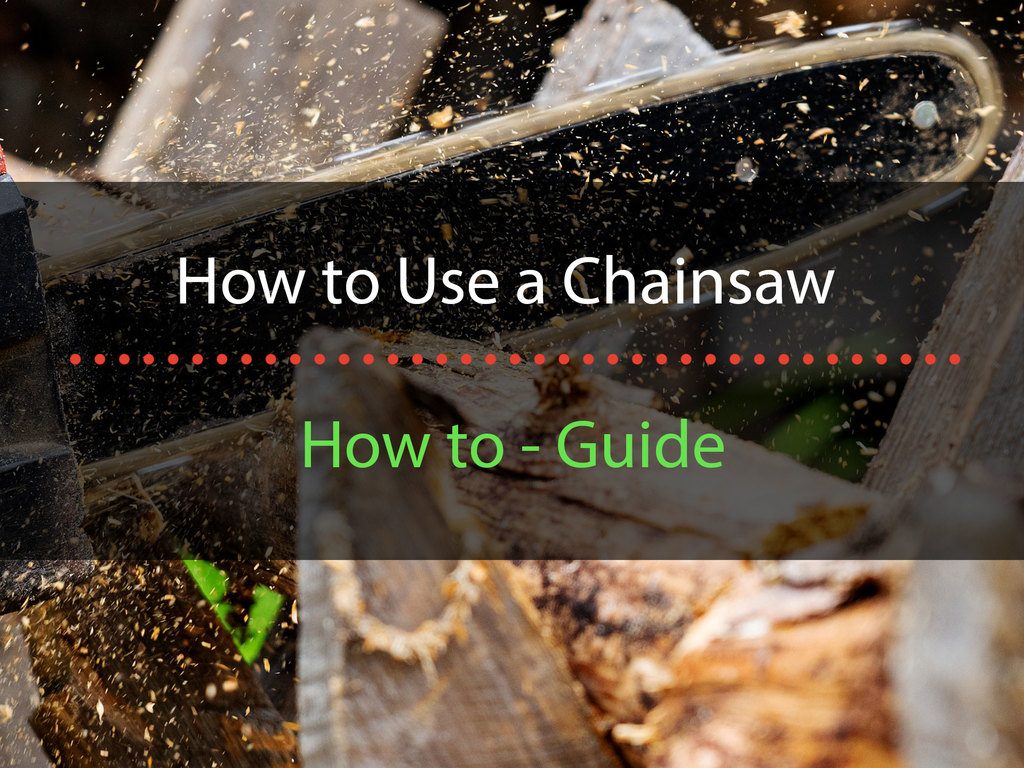
How to Use a Chainsaw
Regardless of whether you are using a more traditional gas-powered chainsaw, or a more modern electric chainsaw, their use of operations and maintenance procedures are still rather similar.
Here within this one simple article, we will be providing you with a detailed how-to-use guide that can be applied to most, if not all chainsaws, gas-powered or electric, as well as their smaller cousins, the pole saw.
Safety Equipment
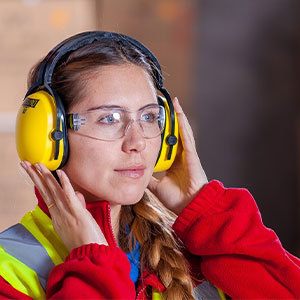
All power tools, yes including chain saws, require a standard array of Personal Protective Equipment or PPE. They create a lot of noise and dust, and you will most likely be cutting things down from overhead. So you will need to use the appropriate PPE regardless of the type of chainsaw or pole saw you are using.
- Googles or similar eye protection
- Earmuffs or earplugs
- Gloves
- Hardhat
- Maybe even a dust mask
General Safety Precautions
Even though a chainsaw is larger and more powerful than a pole saw, both types of saws can still be utilized in a very similar manner. This means that the same safety precautions need to be made when operating these tools.
All forms of chainsaws are dangerous tools, and they should never be used as toys. Like a firearm, a chainsaw needs to be respected, and well looked after. If the saw is poorly maintained, or mishandled, the risk of serious injury is very real.
Be Aware of the Chain

The one consistency among all chainsaws and pole saws is the chain itself. It is this chain that makes both chainsaws and pole saws so dangerous to use.
A spinning chain, even at low speeds, can cause serious harm to the human body. The blades on the chain can be designed to be sharp enough to easily rip through the hardest of hardwoods. Anyone who’s unfortunate enough to have the spinning chain, come into contact with their skin will always come off second best.
For this reason, keep all body parts away from the chain of a chainsaw. Especially when the saw is running or powered, and never, ever, carry a chainsaw or pole saw by the guide bar.
Watch Out For Falling Objects
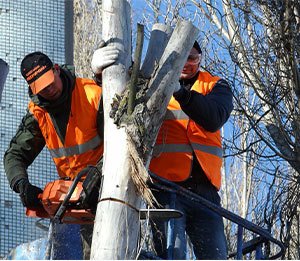
Most of the time, people use pole saws and chainsaws to cut down branches or trees. This inevitably means that things will be falling down. Regardless of if you are lopping off branches, reducing the height of a tree, or cutting a tree down, you need to be careful not to let them fall onto anyone or anything valuable that is nearby.
Removing the Chain
When you are replacing the chain of your saw, the first thing you need to do is disconnect an electric saw from its power source. Then you’ll need to make sure that you use the correct tools for undoing the fasteners and loosen the tensioner.
Trying to use the wrong tools for the job, not only makes the task needlessly complicated, it also carries the risk of something going wrong. This could be as simple as your hand slipping, fingers getting pinched, or cutting your knuckles on a sharp edge.
Replacing the Chain
Once the chain has been removed, give the guide bar and drive sprocket of the saw a quick inspection to make sure that there are no obstructions, and to see if it needs to be cleaned, or reoiled.
Replacing a chain is not as simple as swapping out a blade on a miter saw. Chains lengthen and stretch over time from use. So when a chain is replaced you need to make sure to adjust the tensioner correctly. If the chain is too loose, it could slip off while you are cutting which then would break the teeth off the drive sprocket. Yet if the chain is too tight, there is a risk of it snapping, sending links and bits of blades flying, or jamming up the saw, causing damage to the saw itself.
Power Sources
There are two types of power sources for electric chainsaws and pole saws, batteries for the cordless saws, and direct electricity for the corded saws.
Damaged batteries will generally not work properly. They may only hold a limited charge, or fail to provide any power at all. So the risk of personal injury associated with batteries is rather limited. Just be sure to check out the safety information for the particular batteries that you are using.
Corded saws, on the other hand, can actually present problems of their own. Besides being considered a trip hazard on many construction sites, using a faulty power cord could lead to injury. It is advisable to avoid using cords that are frayed or with exposed wires. Frayed cords are a potential fire hazard, and pose a risk of causing electrical shock.
Gas-powered saws are another thing. Be sure to store your gasoline in appropriate containers, and in well-ventilated areas. The fuel itself could eat its way out of a container that’s not made out of suitable materials. Gasoline will also evaporate as it is exposed to oxygen and heat. This is why adopting appropriate storage practices is essential for storing gasoline, especially if you are in an isolated area.
Disconnect the Saw From Its Power Source When Done
If you are using an electric saw, never store or leave an electric saw unattended while it’s still connected to a power source. This will prevent the saw from being accidentally triggering when someone needs to move it, or if kids were to get their hands on it.
How to Operate a Chainsaw
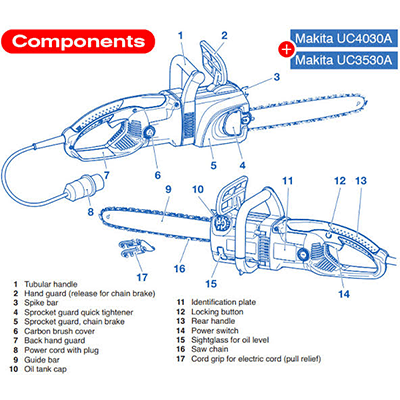
Aside from performance, there is very little in the way of differences when it comes to operating a gas or electric chainsaw. Both saws are held in a similar manner, and both saws require that their chain and gears be well oiled and lubricated to help prevent overheating, and wear and tear.
They also share very similar designs for their handle grips and positionings. This is why there’s not much difference in the way, one would use an electrical chainsaw to do the same job as a gas-powered chainsaw.
Start-Up Preparations
Before you start up your chainsaw, there are a few basic inspection checks that you will need to do first. This is necessary to ensure that your chainsaw can run smoothly for years to come, as well as being able to function at all.
Step 1) Inspect the chain.
Are there any missing or broken blades?
Do the blades need sharpening?
Step 2) Check For Obstructions
Have a look around the drive sprocket.
Has any debris built up around the sprocket?
Step 3) Check the Chain Oil Levels
Make sure that there’s chain oil, you do not want the chain to run dry.
Is the oil reservoir full?
Step 4) Is the Chain Break On
Before you try turning your chainsaw on, you need to make sure that the chain brake is on.
Step 4) Power Source
Do you have a full tank of gas?
Are the batteries charged?
Is the power cord damaged in any way?
How to Start a Chainsaw

First off, electric chainsaws are ready to go once they have been powered up. Gas-powered chain saws, on the other hand, need their motors cranked over.
To crank over a gas motor, you just need to follow these 9 quick and simple steps:
Step 1) Carry out the above start-up preparations.
Step 2) Close the Choke.
This will close off the airflow, giving the motor a more concentrated fuel mixture.
Step 3) Press the Decompression Valve.
This only applies to some models. Not all chainsaws have a decompression valve.
Step 4) Press the Primer Bulb or Press the Air Purge Bulb.
Depending on the model of your chainsaw, you will either have a Primer Bulb, or an Air Purge Bulb. Please follow part a) or b) to this step.
a) If your chainsaw has a primer bulb, located near the fuel inlet hose, give it about 5 presses, no more than 6.
b) If your chainsaw has an air purge bulb, give this a press to clear the excess air out of the fuel lines.
Step 5) Pull the Starter Cord.
Depending on the model, your chainsaw may have what’s called a boot grip.
- Place the chainsaw on the ground.
- Grip the top handlebar with your off-hand.
- Place your dominant foot on the boot grip, otherwise, position it on top of the chainsaw’s motor.
- With your dominant hand, gently pull the cord back until you feel resistance.
- With several full and firm movements, pull the cord back as hard as you can, in quick succession.
Step 6) Set the Choke to Run.
When the motor coughs and splutters to life, turn the choke to “Run”. This may vary from model to model. It may say On or Start.
The chainsaw may stall at this point.
Step 7) Pull the Cord Again.
If the chainsaw has stalled, repeat step 5. If the chainsaw stalls again, only repeat step 5, 1 or 2 more times to avoid flooding the motor.
Step 8) Warm Up the Motor.
Once the motor has been kicked over, and the chainsaw is able to maintain an idle, let it idle for a minute or two to warm up.
Step 9) Test the Throttle.
To see if the chainsaw is ready to go, rev up the motor to see how it sounds. If there’s any coughing or pausing in the throttle, give it a few more minutes to warm up.
How to Engage the Chain
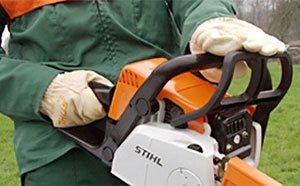
All chainsaws, gas-powered or electric, have a chain brake that prevents the chain from spinning. The break pretty much works like a clutch that keeps the chain in neutral. This is needed to help prevent any accidents from occurring.
With the chainsaw powered, or the motor running, grip the top handle with your offhand, and the hold the throttle control handle with your dominant hand.
Squeezing the throttle will not speed up the chain until the release lever in front of the top handlebar has been pulled back.
You may hear a clunk, or a click to indicate that the chain brake has been disengaged. Now you can increase the speed of the chain by applying more pressure to the throttle controls, or less by easing off on the throttle.
Marking Your Cut
Depending on the model of chainsaw that you are using, you may be able to cut into timber with just the tip of the guide bar. More often then not, however, you’ll need to bring the chainsaw length of the guide bar onto the tree.
Begin your cuts buy revving up your chainsaw, before pressing it against the tree. This will give you greater control over where the chain starts biting into the timber.
You can cut in both directions that apply presser across the guide bar. So up and down if you are holding the chainsaw upright, or left to right, if the chainsaw is being held on its side.
If felling a larger tree, you will need to make several cuts from different angles. We would not recommend trying this without first knowing how to do it properly. If you cut it wrong, the tree could fall in the wrong direction, crushing your car, house, or even you.
When making your cuts, do not apply too much pressure. If you try to force the chainsaw into the wood, faster then it can rip away at the material, the chain could become jammed up in the timber, the chainsaw could be ripped from your hands, or you could damage the guide bar.
How to Use Pole Saw
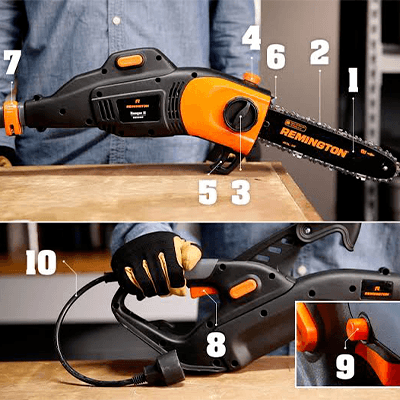
- Guide Bar
- Chain
- Tensioner
- Automatic Reservoir
- Branch Hook
- Bucking spike
- Pole Clamps
- Throttle Control
- Throttle Lockout
- Power Cord
Electric and gas-powered pole saws are a great way to trim those hard to reach hedges and branches around the house, office, or out on the property or farm. There are many different pole saw models available, each one potentially offering a different feature.
Some models allow you to adjust the angle of the guide bar in relation to the pole. Others allow you to not only extend the pole but to remove it completely, giving you a nice little mini chain saw.
Yet all of these differences have little to no effect on how you would need to operate a pole saw.
Accuracy
Pole saws are not a precision tool. Granted that there are sculptors that like to use the small chain blades of the pole saw to carve out some beautiful pieces. That is not what the pole saw was designed to do.
In the most basic of terms, pole saws are a means to an end and are only as accurate as you are skilled with them. The better the clearance you have, the better the access you’ll have. If you need to cut closer to the trunk of a tree, maybe look at removing some of the surrounding branches or other obstacles first.
Catching Falling Branches
You will not want to use your pole saw to hold up braches or to try and catch them. If the weight of the branch is too much for you to handle or more than you were expecting, it could result in the pole saw being forced down like a headsman’s ax. Not a good idea at all.
If you need to stop the branches from falling while you are using the pole saw, look at using ropes to hold the branches aloft. Or have someone else hold the branch with an extendable gripper of sorts.
How to Start Cutting
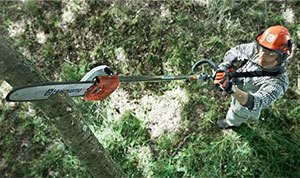
To use a pole saw effectively, you need to let gravity pull the saw downwards, with you controlling the speed of the chain. Do not try stabbing or driving the guide bar of the saw into a solid object, pole saw have not been designed to take force being applied down the length of the guide bar, only across it.
- Holding the pole saw with the throttle control in your dominant hand, and guiding the pole with your offhand.
- Line the pole saw up where you intend to start cutting, by resting the spinning blade against the desired branch.
- When you are happy with the location of the intended cut, lift the pole saw back up and off of the branch.
- Engage the throttle, and allow the saw to gently lower back down onto the branch.
- Hold the pole saw in place with your offhand to help steady it, and increase the throttle to speed up the chain enough to cleanly cut through the branch.
- Easy off on the throttle as soon as the chain has cut through the branch.
Helpful Tip For a Clean Cut
For best results and the cleanest of cuts, you may want to try cutting the underside of the branch first. All you’ll need to do is cut partway into the bottom of the branch, say maybe about ¼ of the way through.
When the weight of the brach begins to pull it away from the trunk as you cut from above, it will be less likely that the branch will tear away at the trunk itself.
This is also a good method to use if you are trying to avoid splintering the branch.
